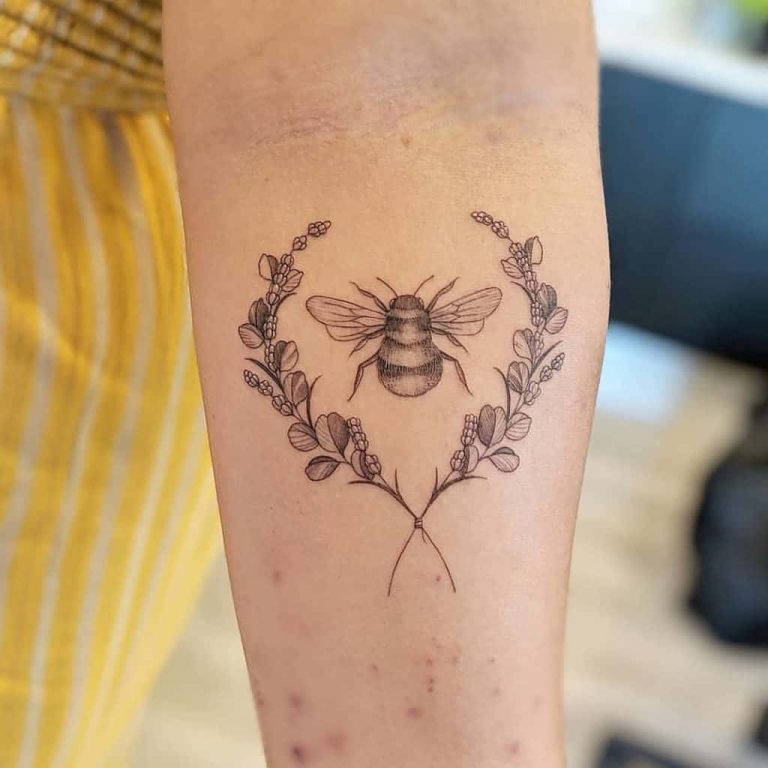Yes, you can tattoo over a removed tattoo. The removal process will leave behind a scar, but the tattoo artist will be able to work with that. Keep in mind that the new tattoo will not look exactly like the old one.
- If your skin is still healing from the removed tattoo, wait until it is completely healed before starting the tattooing process
- Choose a design that you like and that will cover up the removed tattoo completely
- Find a reputable artist who can do the tattoo for you
- Make sure to discuss your expectations and desired outcome with them beforehand
- Once you have chosen an artist and scheduled an appointment, make sure to follow their aftercare instructions carefully to ensure optimal results
Tattoo Removal
If you’re considering tattoo removal, there are a few things you should know. First, it’s important to understand that the process is not always easy or quick. There are a number of factors that will affect how well your tattoo responds to treatment, including the type of ink used, the depth of the ink, and your skin type.
Tattoo removal typically requires multiple sessions, spaced several weeks apart. During each session, a laser is used to break up the ink pigment so that it can be absorbed by the body. The number of sessions needed varies depending on these factors mentioned above.
The cost of tattoo removal can also vary depending on these same factors. In general, however, you can expect to pay several hundred dollars per session. Some insurance plans may cover part or all of the cost of tattoo removal; check with your provider to see if this is an option for you.
If you’re considering tattoo removal, be sure to talk to a board-certified dermatologist or other qualified healthcare professional about your options and what you can expect from treatment before moving forward.
Can You Tattoo Over a Laser Removed Tattoo
If you’re considering getting a tattoo removed by laser, you may be wondering if you can tattoo over the treated area afterwards. The short answer is yes, but there are some things to keep in mind before doing so.
First of all, it’s important to give your skin some time to heal after the laser treatment.
This means that you should wait at least 6-8 weeks before getting a new tattoo. This will give your skin time to recover and will help ensure that the new tattoo doesn’t cause any undue stress on the treated area.
Secondly, it’s important to consult with a professional tattoo artist before getting a new tattoo.
They’ll be able to advise you on the best size, placement, and design for your new tattoo. And finally, make sure to use plenty of sunscreen on the treated area when it’s exposed to sunlight – this will help protect your skin and ensure that your new tattoo looks its best!
Can You Get a Tattoo After Laser Removal
If you’re considering laser tattoo removal, you may be wondering if it’s possible to get a new tattoo after the procedure. The answer is yes! Although laser tattoo removal can damage the skin and make it more difficult to heal, it doesn’t mean that you can’t get a new tattoo afterwards.
However, there are a few things to keep in mind before getting inked again.
The first thing to consider is the type of laser used for your tattoo removal. If you had a Q-switched laser treatment, which is the most common type of laser used for this purpose, then there’s no need to worry about damaging your skin further.
However, if you had an older type of laser treatment, such as an ablative laser, then your skin may be more sensitive and prone to scarring. In this case, it’s important to consult with a dermatologist or experienced tattoo artist before getting another tattoo.
Another thing to keep in mind is the location of your previous tattoo.
If your old tattoo was located in an area that was treated with laser removal, then there’s a higher risk of developing scars or pigmentation changes. For this reason, it’s best to choose a different location for your new tattoo.
Finally, it’s important to give your skin time to heal after laser removal before getting another tattoo.
This means waiting at least 6 weeks after your last treatment before getting inked again. This will help ensure that your skin is healthy and ready for another round of needlework!
Laser Tattoo Removal
Laser tattoo removal is a popular choice for people who want to get rid of their tattoos. The procedure uses laser energy to break up the ink particles in the tattoo, which are then absorbed by the body.
Laser tattoo removal is usually done in a series of treatments, and each session will target a different layer of ink.
The number of treatments needed depends on the size, depth, and color of the tattoo.
Most people report good results with laser tattoo removal, but it is important to keep in mind that there is a risk of scarring and pigmentation changes. Be sure to consult with a board-certified dermatologist or plastic surgeon before getting any type of laser treatment.
Tattoo Removal near Me
If you’re considering getting a tattoo removed, you may be wondering where to start. The first step is finding a reputable tattoo removal specialist near you. There are many ways to find a qualified professional, including asking for referrals from friends or your dermatologist.
Once you’ve found a few candidates, be sure to schedule a consultation appointment to discuss your goals and expectations for the procedure.
During the consultation, the specialist will assess your tattoo and skin type to determine the best course of treatment. They’ll also go over the risks and side effects associated with tattoo removal so that you can make an informed decision about whether or not it’s right for you.
If you decide to proceed with treatment, they’ll likely recommend a series of sessions spaced several weeks apart in order to minimize any potential damage to your skin.
If you’re looking for tattoo removal near me, there are plenty of qualified professionals who can help you achieve your goal safely and effectively. Be sure to do your research and ask lots of questions during your consultation in order to make sure that you’re comfortable with the specialist and the procedure itself.

Credit: inkdoubtdenver.com
How Long Do You Have to Wait to Get a Tattoo After Removal?
If you’ve had a tattoo removed, you’ll need to wait at least 6 weeks before getting another one. This is because it takes time for the skin to heal and regenerate after the removal process. During this time, it’s important to keep the area clean and moisturized to prevent infection and scarring.
Once the skin has healed, you can go ahead and get your new tattoo!
Is It Better to Get a Tattoo Removed Or Covered Up?
There is no definitive answer to this question as it depends on each individual situation. Some people may feel that getting a tattoo removed is the best option for them, while others may prefer to have it covered up. Ultimately, the decision of whether to remove or cover up a tattoo is a personal one and should be made based on what will work best for you and your unique circumstances.
Does a Removed Tattoo Leave a Scar?
A tattoo is an ink design inserted into the skin, usually with the help of a needle. Tattoos are considered permanent because the ink is injected beneath the top layer of skin, called the epidermis, and into the second layer of skin, called the dermis. Once a tattoo is in your skin, it’s there for life.
Although some people do successfully remove their tattoos, this process typically leaves behind a scar.
The risks associated with removing a tattoo are similar to those associated with getting a tattoo in the first place. These risks include infection, allergic reaction to the ink or anesthesia used during removal, and scarring.
In addition, some people may experience hypopigmentation (lightening of skin) or hyperpigmentation (darkening of skin) around the removed tattoo.
If you’re considering having your tattoo removed, be sure to consult with a board-certified dermatologist or plastic surgeon who has experience performing this procedure.
What is the Hardest Color Tattoo to Remove?
There are a lot of factors that contribute to how difficult it is to remove a tattoo. The color of the ink, the depth of the ink, and the location of the tattoo all play a role. Black ink is generally the easiest to remove, while white ink is usually the most difficult.
Green and blue inks tend to fall somewhere in the middle.
Tattoo-removal procedures leave clients scarred for life
Conclusion
If you’re considering getting a tattoo removed, you may be wondering if you can simply get a new tattoo over the old one. The answer is maybe. It depends on several factors, including the size and location of your old tattoo, the type of removal treatment you used, and how well your skin has healed.
If your old tattoo was small and located in an area with good blood circulation, it’s likely that the skin will have healed sufficiently for a new tattoo. However, if your old tattoo was large or located in an area with poor blood circulation (such as the ankle), it’s possible that the skin won’t have healed properly and a new tattoo could cause infections or other problems.
It’s also important to consider the type of removal treatment you used.
If you had laser surgery or another form of professional removal, your skin will probably be fine for a new tattoo. However, if you used home remedies like TCA (trichloroacetic acid) or salt water baths, your skin may not be strong enough to support a new tattoo. In these cases, it’s best to wait at least 6 months after removal before getting a new tattoo.




